With the Radeon RX 6600 XT, AMD offers a new and good entry-level graphics card for gaming in Full HD. But which custom design should players choose? ComputerBase has the models MSI Gaming X, PowerColor Red Devil, Sapphire Pulse and XFX Merc 308 in the comparison test.
Table of contents
- 1 MSI, PowerColor, Sapphire and XFX in comparison
- Custom designs from PowerColor, Sapphire, XFX and MSI in the test
- The PowerColor Radeon RX 6600 XT Red Devil in detail
- The Sapphire Radeon RX 6600 XT Pulse in detail
- The XFX Radeon RX 6600 XT Merc 308 in detail
- The custom designs of the RX 6600 XT clock in games
- 2 benchmarks, volume, other measurements and conclusion
- benchmarks in Full HD
- Volume & amp; Cooling
- Power consumption
- Conclusion
With the Radeon RX 6600 XT (test), AMD is now offering a new entry-level graphics card that is well suited for playing all AAA titles with maximum graphics details apart from ray tracing in Full HD. The price is very high at 379 euros MSRP, but the following still applies: The MSRP has little to do with the market price and many players simply have to buy what the market has to offer.
The sale of the Radeon RX 6600 XT starts today, only custom designs will be available in stores – but which one is particularly recommended?
Custom designs from PowerColor, Sapphire, XFX and MSI in the test
In the initial test of the Radeon RX 6600 XT, ComputerBase used the MSI Radeon RX 6600 XT Gaming X. The Gaming X is named after a premium model that is slightly overclocked by default and also cuts a good, if not excellent, figure in terms of the cooling system and therefore volume. This also applies to the materials chosen for Gaming X (plastic) and the very simple RGB LED lighting. If you pick up the model, you won't go wrong and get a good custom design without any real weaknesses. But is there any better way?
Three other partner cards try to raise the bar in this test: The PowerColor Radeon RX 6600 XT Red Devil, the Sapphire Radeon RX 6600 XT Pulse and the XFX Radeon RX 6600 XT Merc 308. While PowerColor with the Red Devil is a classic premium Card, Sapphire leaves it for the time being in this class with a “basic model” that concentrates on the bare essentials. With the Merc 308, XFX is exactly in the middle between the two and is in direct competition with the MSI card.
The PowerColor Radeon RX 6600 XT Red Devil in detail
The PowerColor Radeon RX 6600 XT Red Devil is a classic premium model that is rarely found in the entry-level class. It is not only based on the design of the larger versions up to the Radeon RX 6900 XT Red Devil, the choice of materials is still very high quality – everything is just a little bit smaller. And so the Radeon RX 6600 XT Red Devil looks absolutely high quality and feels the same – here is “Premium” in contrast to the Gaming X program. Those who value optics and haptics have already found their winner in the test with the Radeon RX 6600 XT. With a large margin.
The rest of the graphics card also calls for premium. The 2.5 slot cooler uses a lot of material and is correspondingly heavy. With two axial fans measuring 100 mm in diameter, the red devil is also well ventilated. The model is also the only one in the test field to offer two different BIOS versions. The OC-BIOS has a TGP of 145 watts, the silent BIOS is designed for 135 watts – that is 15 or 5 watts more than in AMD's official specifications. With an 8-pin and a 6-pin power connector, the Radeon RX 6600 XT Red Devil is also best suited for overclocking of all custom designs, the same applies to the PCB with ten voltage converter circuits. The RGB lighting is a bit out of the ordinary.
-
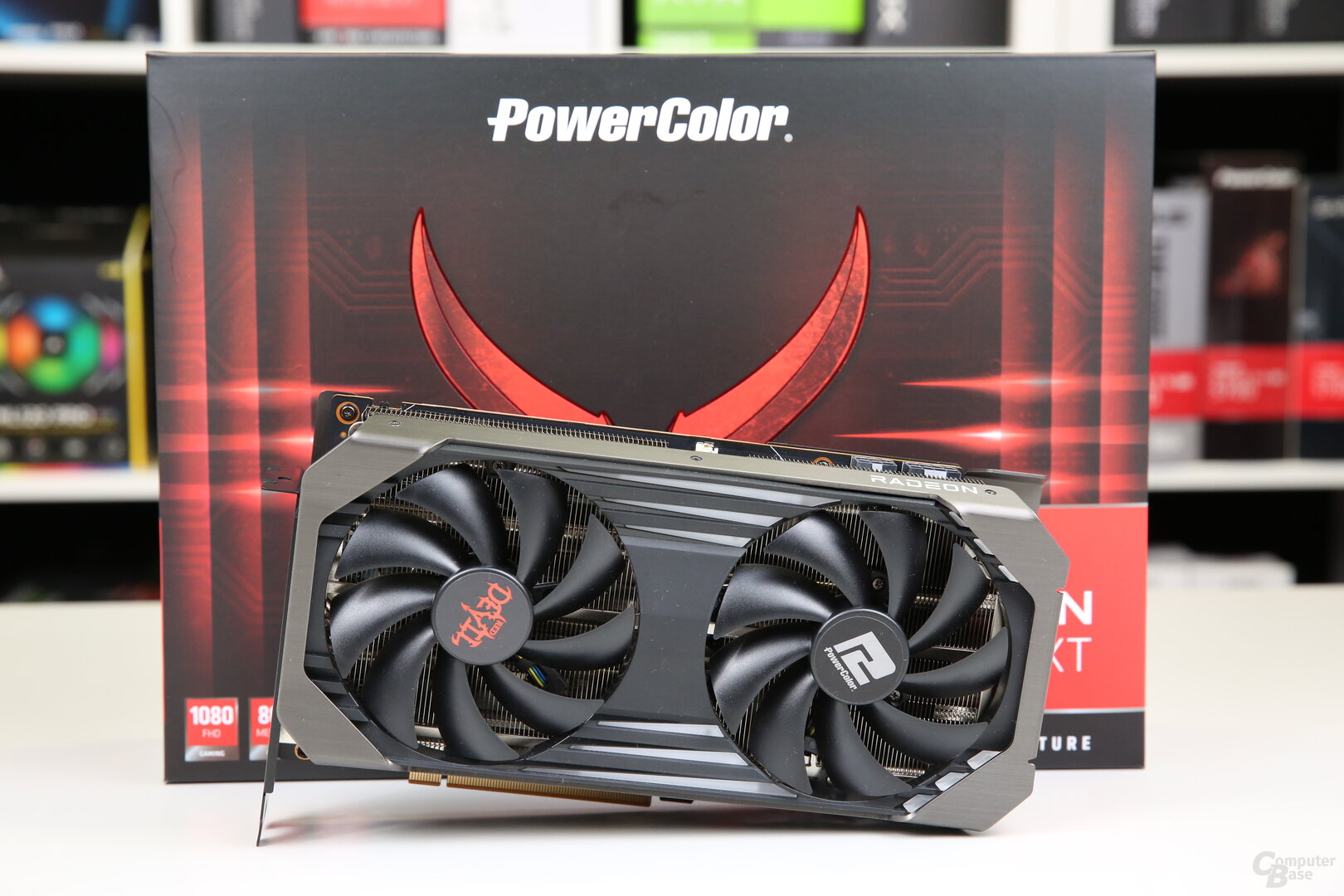 The PowerColor Radeon RX 6600 XT Red Devil in the test
The PowerColor Radeon RX 6600 XT Red Devil in the test
Image 1 of 4
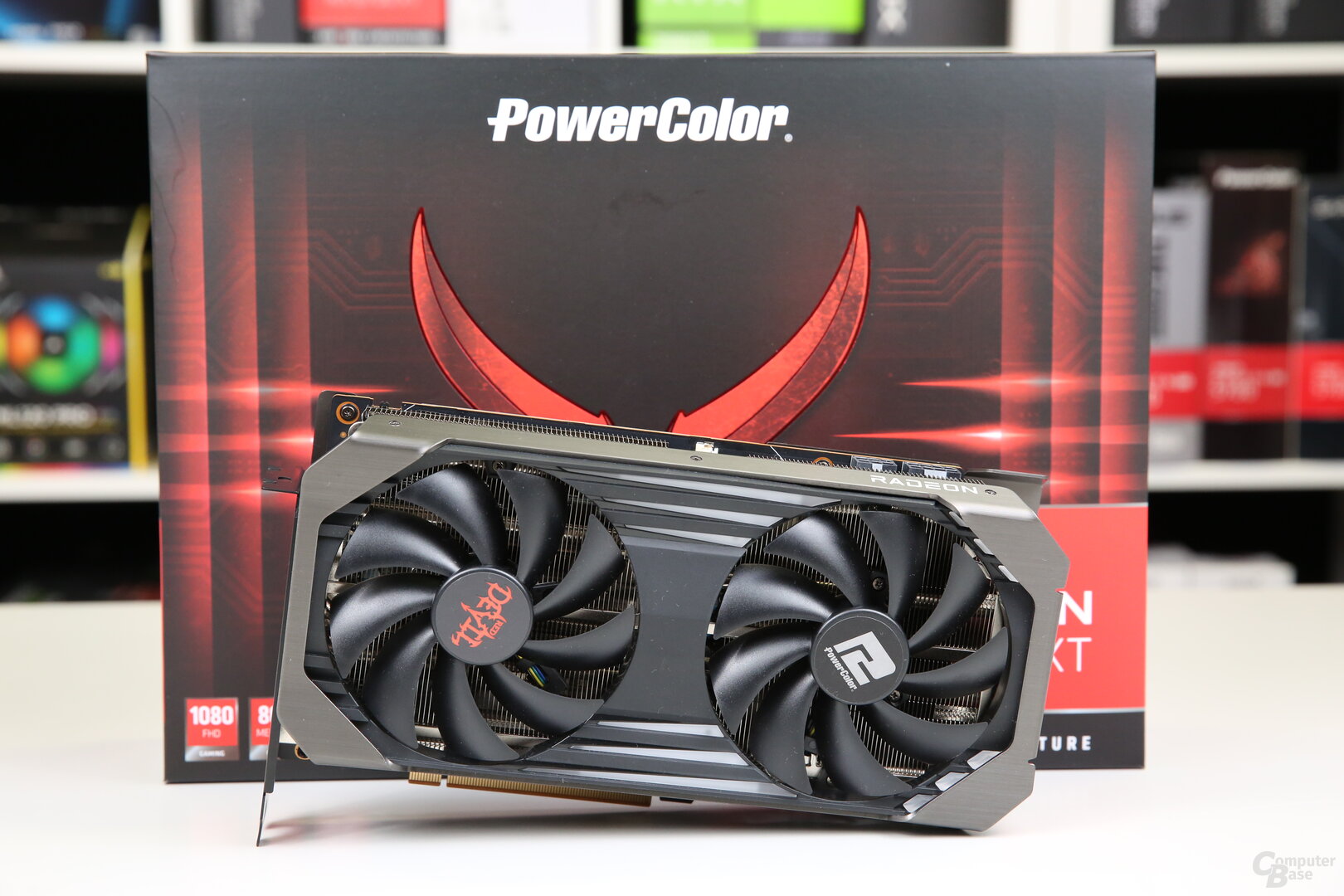 The PowerColor Radeon RX 6600 XT Red Devil in the test
The PowerColor Radeon RX 6600 XT Red Devil in the test 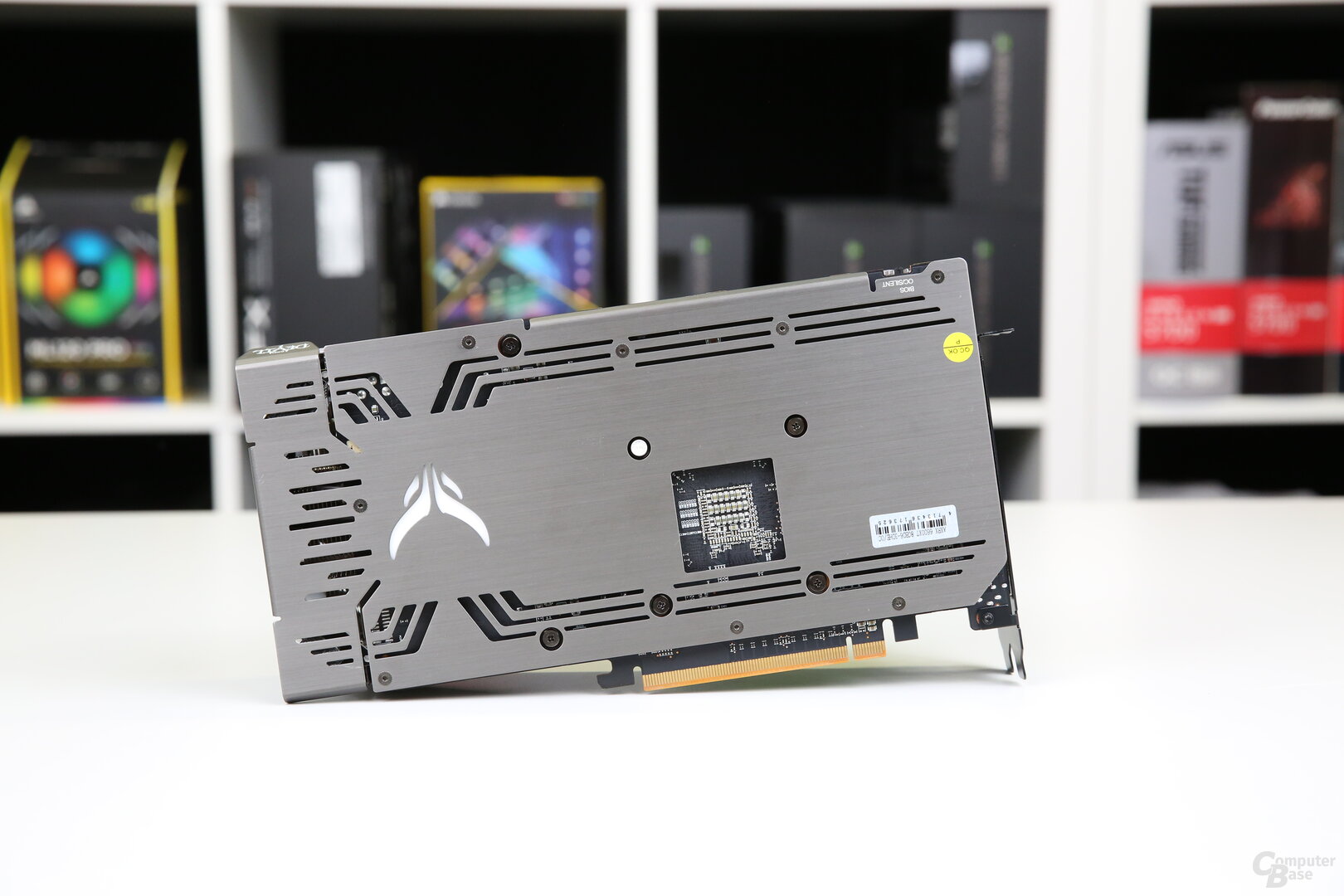 The PowerColor Radeon RX 6600 XT Red Devil
The PowerColor Radeon RX 6600 XT Red Devil 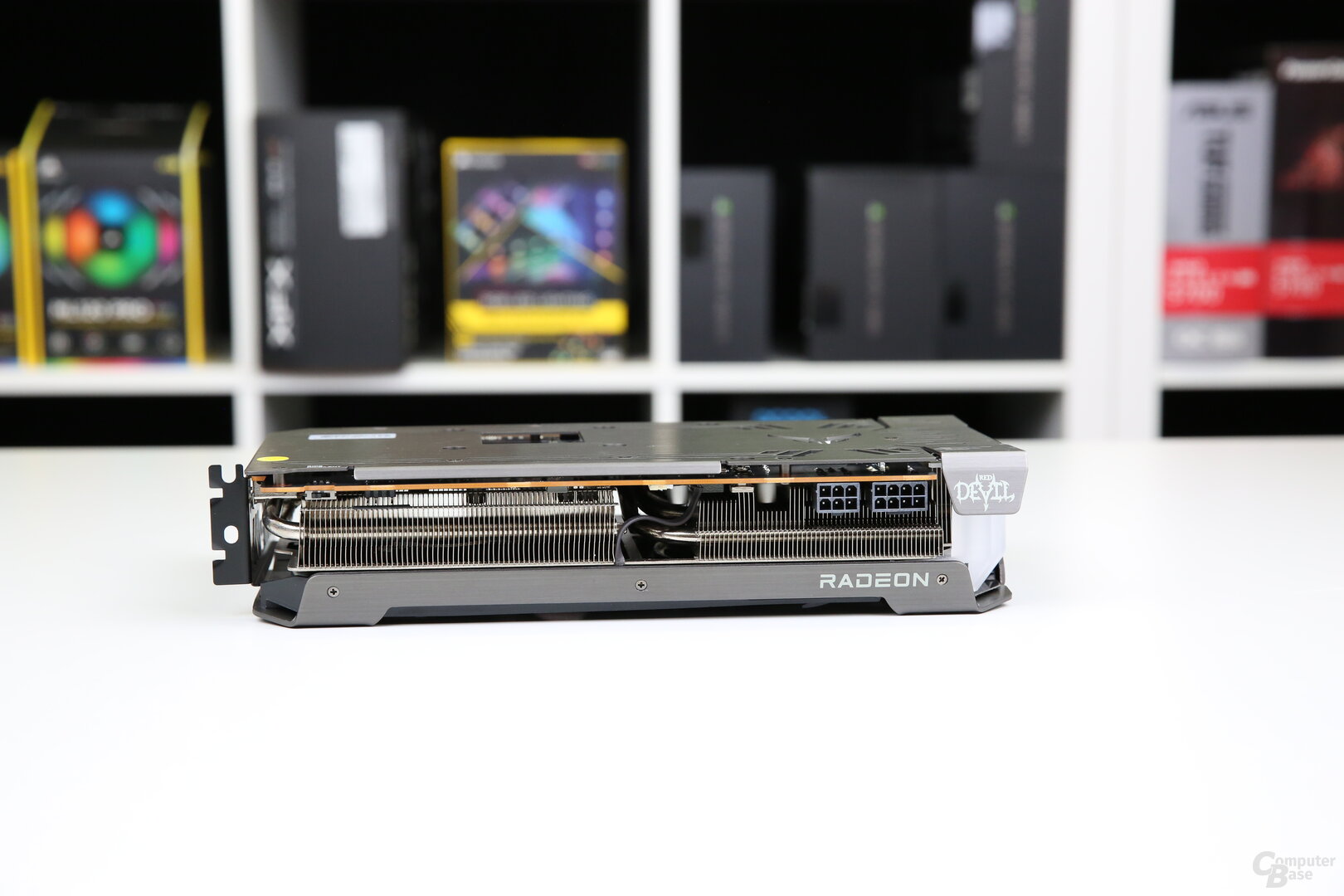 The PowerColor Radeon RX 6600 XT Red Devil
The PowerColor Radeon RX 6600 XT Red Devil < h2 class = "text-width text-h2" id = "section_die_sapphire_radeon_rx_6600_xt_pulse_im_detail"> The Sapphire Radeon RX 6600 XT Pulse in detail
Sapphire goes exactly the opposite way with the Radeon RX 6600 XT Pulse and keeps everything as simple as possible with the Pulse. It starts with the look and feel, because there is nothing more than plastic in the model. There is also no RGB lighting. Nonetheless, the graphics card looks simple, but not “cheap”. A second BIOS is also missing and there is no more than one 8-pin power connector. In addition, the PCB and cooler are much simpler, but ultimately still look high-quality. The test will show whether this has any disadvantages.
The cooler of the Radeon RX 6600 XT Pulse consists of only one large aluminum heat sink with only two heat pipes. Two axial fans with a diameter of 85 mm provide the necessary fresh air. The TGP of the graphics card is 135 watts – 5 watts more than AMD provides for the RDNA-2 entry-level.
-
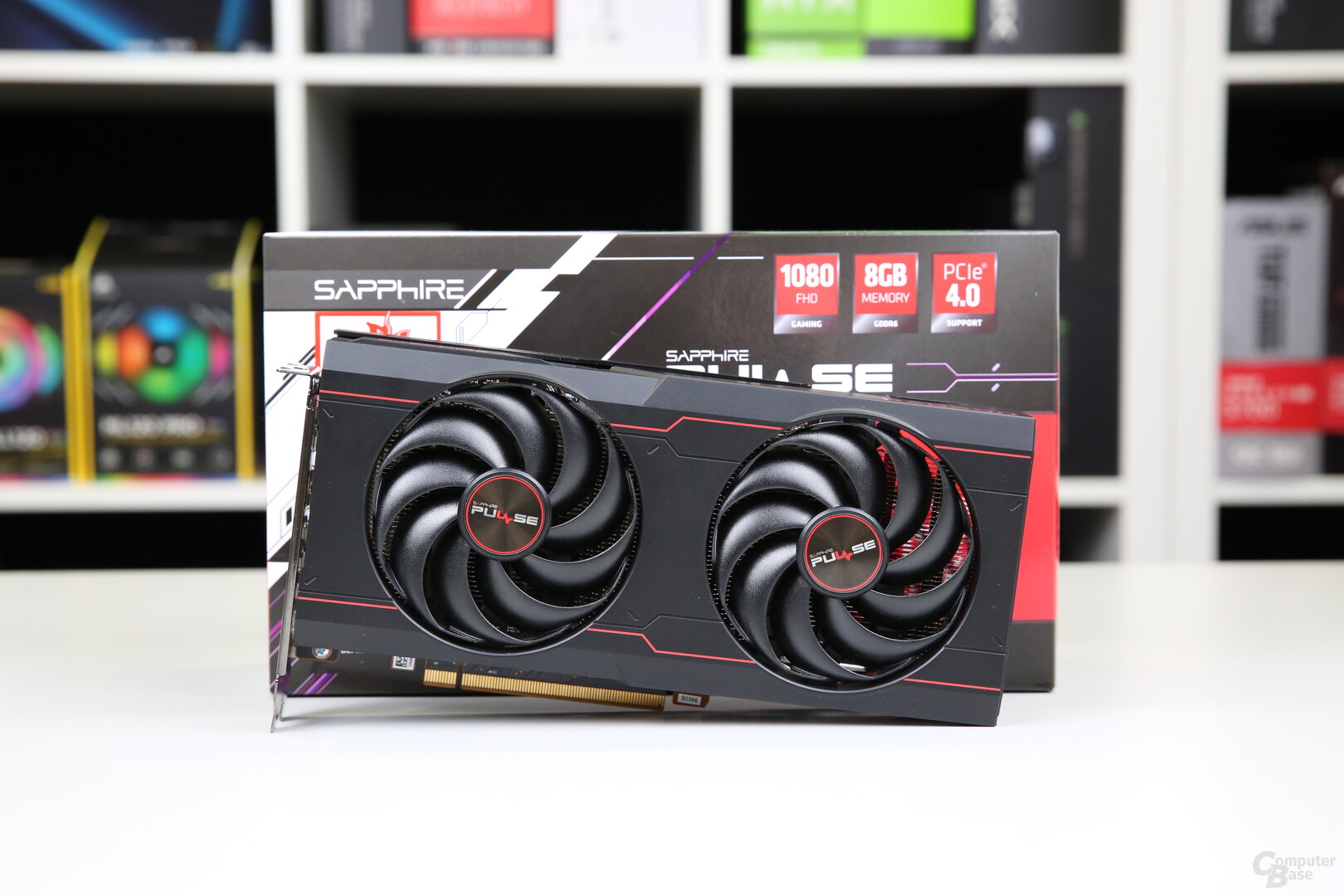 The Sapphire Radeon RX 6600 XT Pulse in the test
The Sapphire Radeon RX 6600 XT Pulse in the test
Image 1 of 4
 The Sapphire Radeon RX 6600 XT Pulse
The Sapphire Radeon RX 6600 XT Pulse 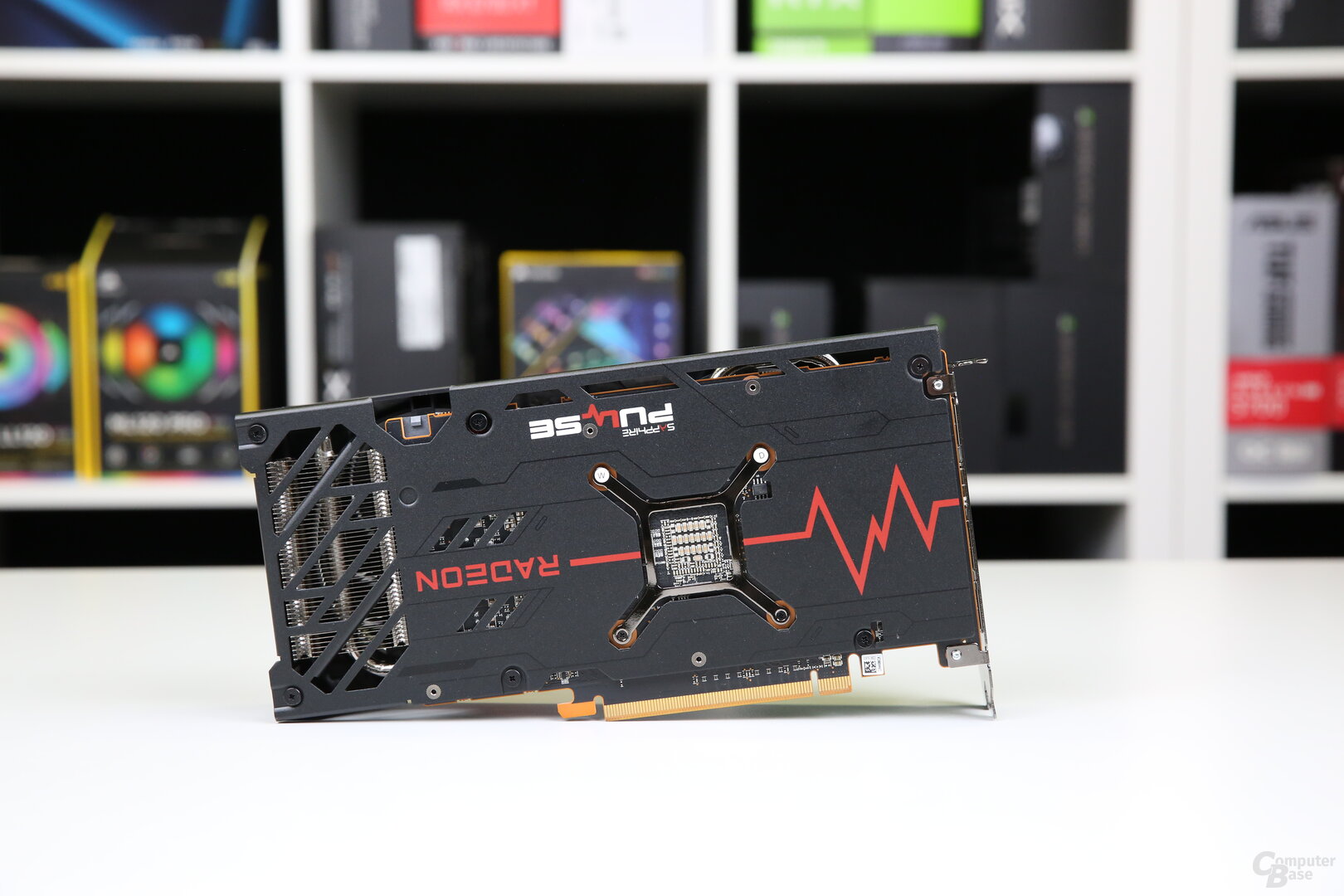 The Sapphire Radeon RX 6600 XT Pulse
The Sapphire Radeon RX 6600 XT Pulse 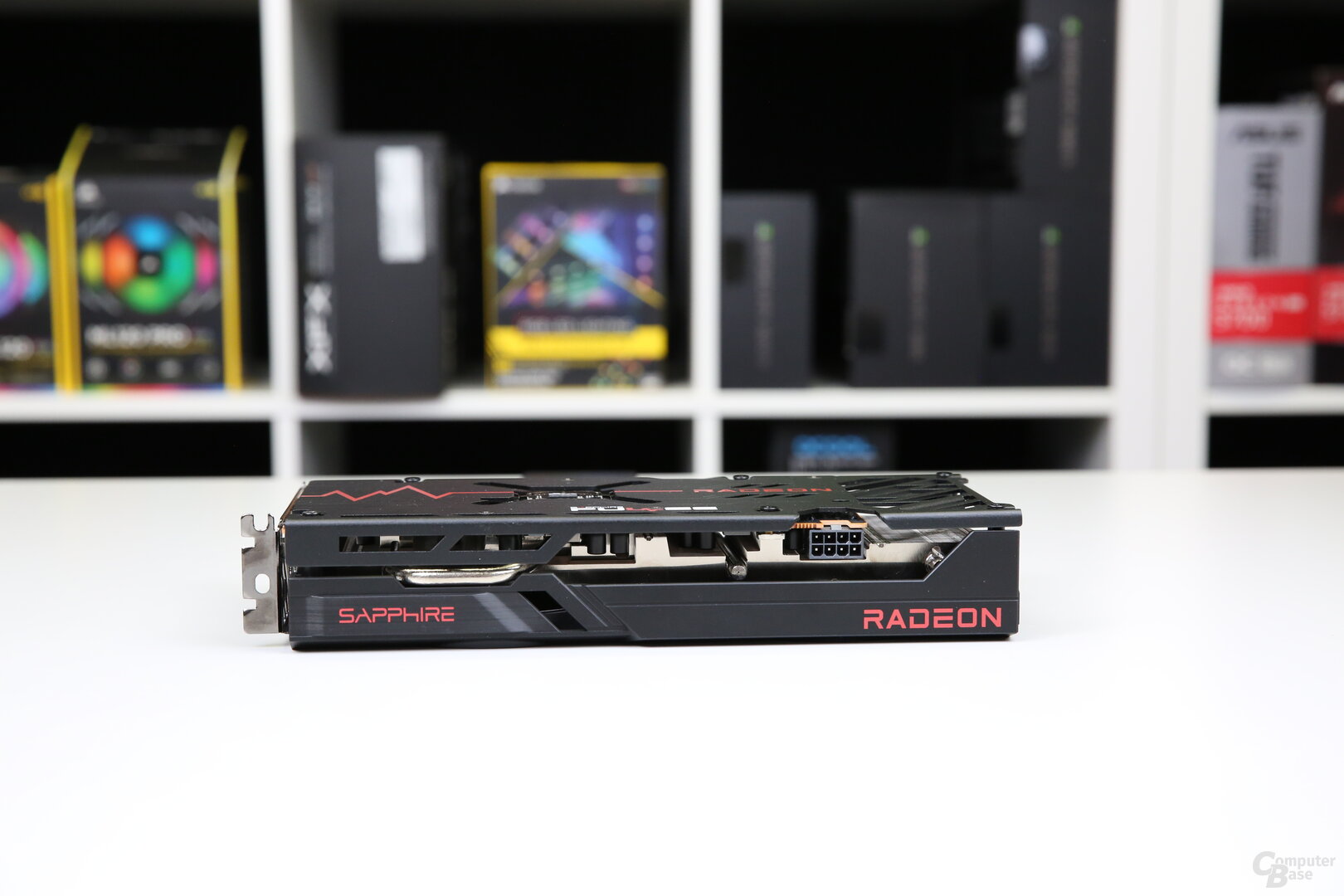 The Sapphire Radeon RX 6600 XT Pulse
The Sapphire Radeon RX 6600 XT Pulse The XFX Radeon RX 6600 XT Merc 308 in detail
XFX takes a middle ground with the Radeon RX 6600 XT Merc 308. The look and feel are better than with the simple Pulse from Sapphire, but clearly lag behind PowerColors Red Devil. The opponent here is more the Gaming X. The Radeon RX 6600 XT has a unique selling point when it comes to the cooler, because XFX relies on a 2.5 slot model with three instead of only two axial fans, with a diameter of 75 mm being quite small. The three fans mean that the graphics card is 27.5 cm long for the performance class.
The Radeon RX 6600 XT offers a TGP of 145 watts, making it one of the fastest models on paper – but it still has an 8-pin power connector. There is a second BIOS, but the versions are identical for the time being. XFX will probably provide an adapted software version for download in the future. In addition, there is no RGB on the graphics card, but the Radeon lettering is provided with a white LED, which looks quite simple and chic when in use.
-
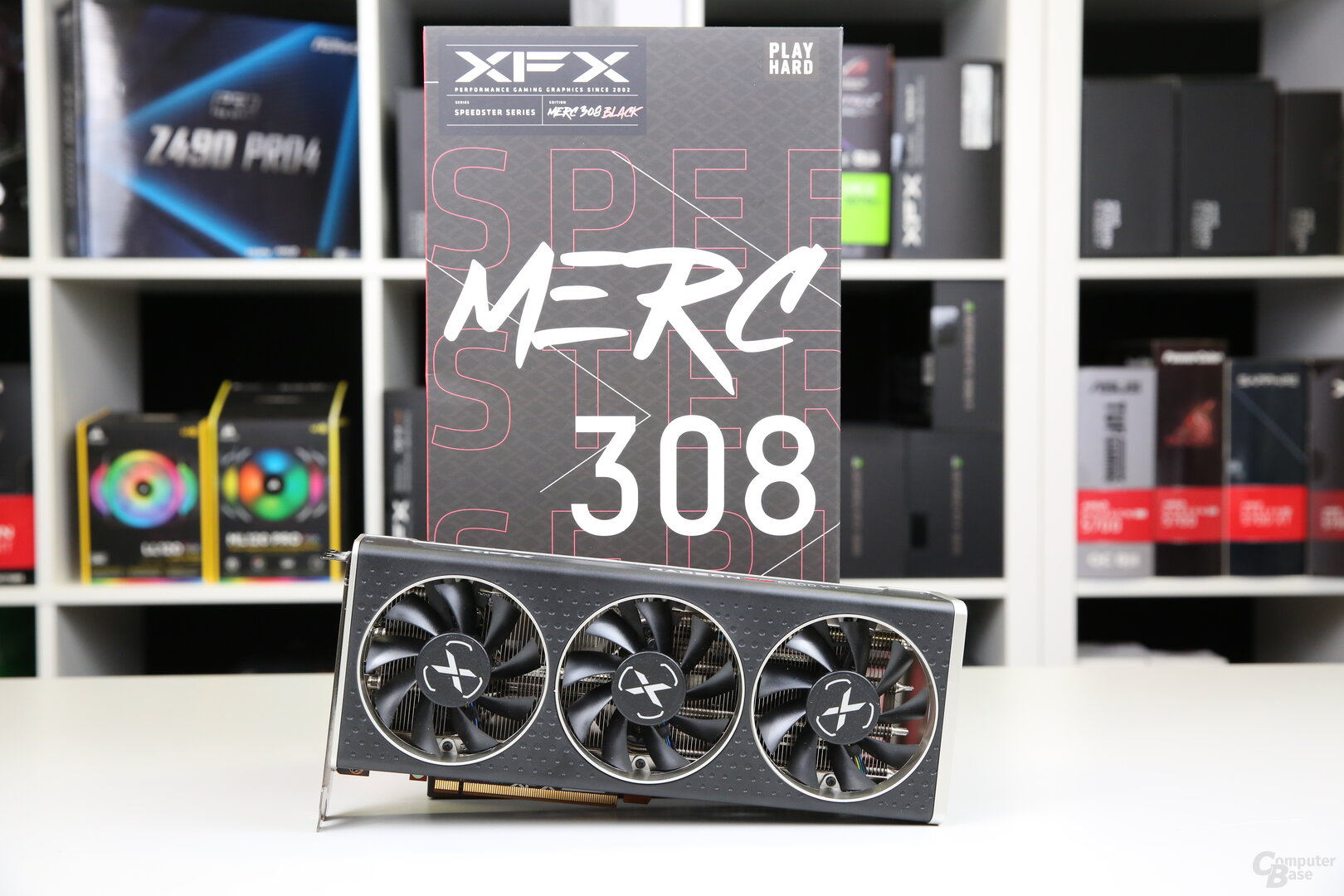 The XFX Radeon RX 6600 XT Merc 308 under test
The XFX Radeon RX 6600 XT Merc 308 under test
Image 1 of 4
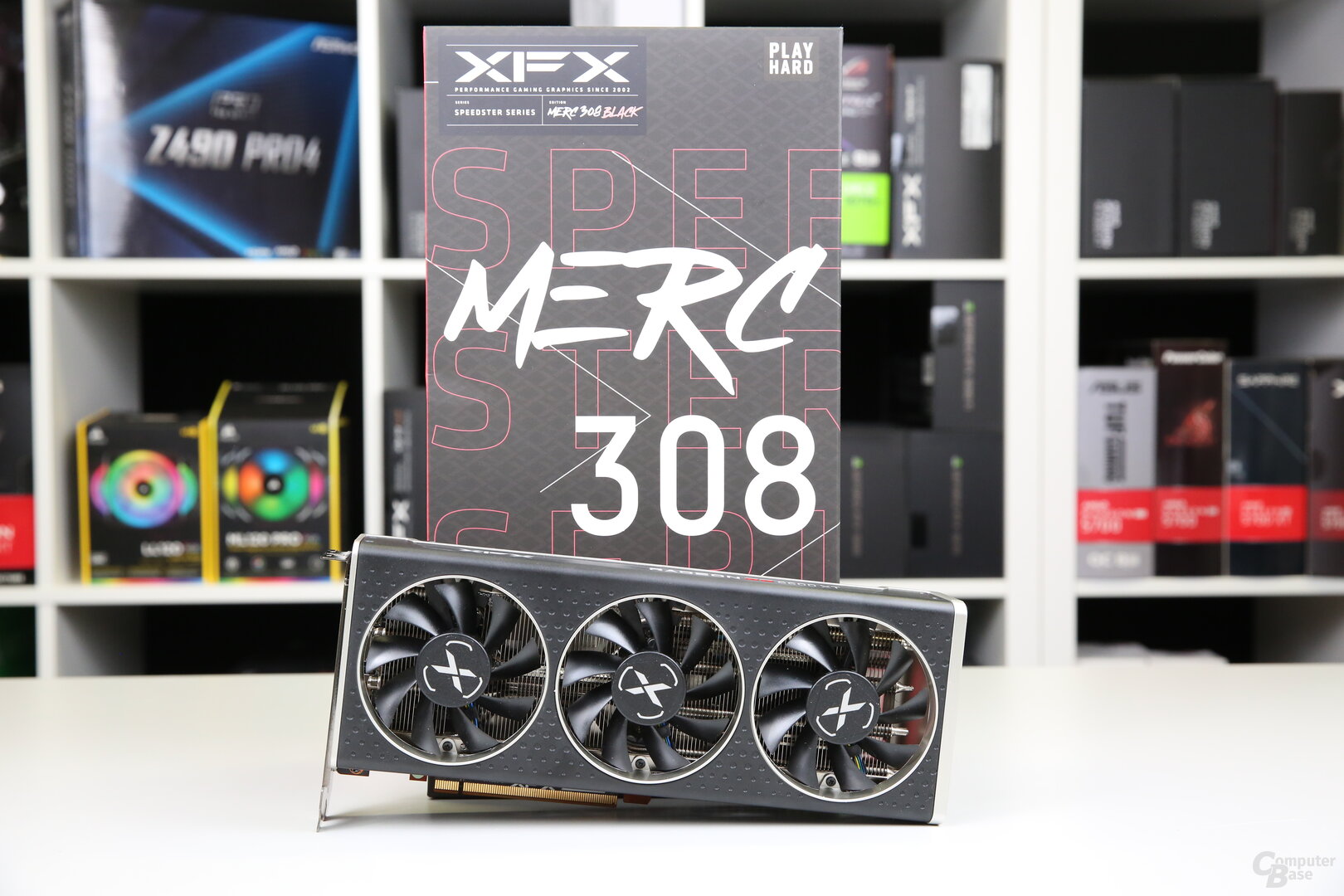 The XFX Radeon RX 6600 XT Merc 308 in the test
The XFX Radeon RX 6600 XT Merc 308 in the test 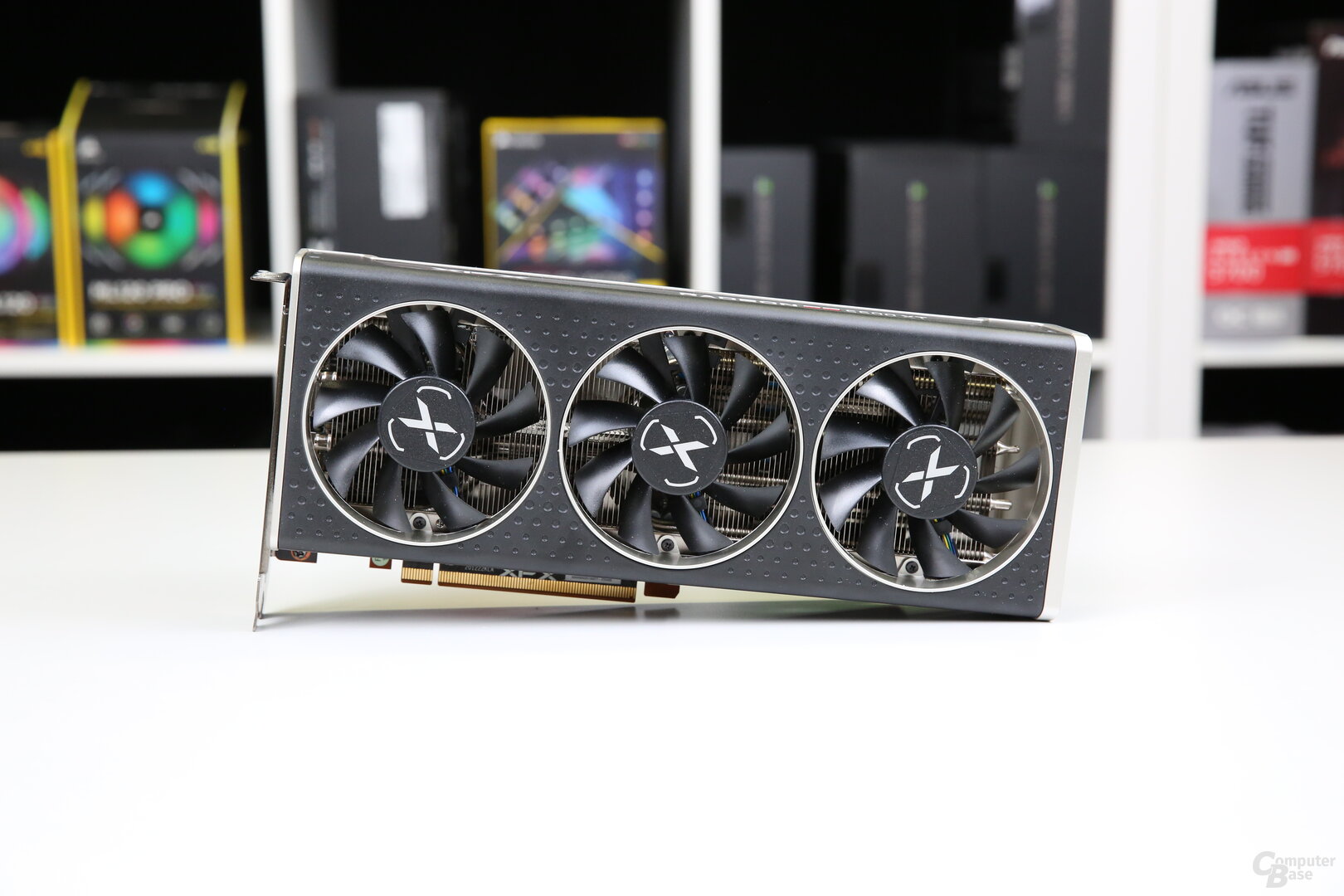 The XFX Radeon RX 6600 XT Merc 308
The XFX Radeon RX 6600 XT Merc 308 Red Devil Sapphire RX 6600 XT
Pulse XFX RX 6600 XT
Merc 308 MSI RX 6600 XT
Gaming X Card PCB design PowerColor Sapphire XFX MSI length, width 25.5 cm, 13.0 cm 24.5 cm, 12.0 cm 27.5 cm, 11.5 cm, 27.5 cm, 13.0 cm Power supply 2 × 8-Pin 1 × 8-Pin Cooler Design Red Devil, 2.5 Slots Pulse, 2.2 Slots Merc, 2.5 Slots Gaming X, 2.5 Slots Heat Sink 4 Heat Pipes
Aluminum Core/Radiator 2 Heat Pipes
Aluminum Core/Radiator 4 Heat Pipes
Aluminum core/radiator Weight 1,000 g 606 g 897 g 882 g Fan 2 × 95 mm (axial) 2 × 85 mm (axial) 3 × 75 mm (axial) 2 × 95 mm (axial) Fan switched off (2D) Yes Start-up speed 1,000 revolutions 1,300 revolutions 850 revolutions 900 revolutions Clock
GPU base 2,064 MHz (OC-BIOS)
2,000 MHz (Silent-BIOS) 2,000 MHz 2,064 MHz 2,064 MHz GPU average 2,428 MHz (OC BIOS)
2,382 MHz (Silent BIOS) 2,382 MHz 2,428 MHz 2,428 MHz GPU maximum 2,607 MHz (OC BIOS)
2,593 MHz (Silent BIOS) 2,593 MHz 2,607 MHz 2,607 MHz Memory 8,000 MHz Memory size 8 GB GDDR6 Power consumption Standard TGP 145 watts (OC BIOS)
135 watts (Silent BIOS) 135 watts 145 watts 135 watts Maximum TGP +20 percent +4 percent Connections 3 x DisplayPort 1.4 DSC
1 x HDMI 2.1
This is how the custom designs of the RX 6600 XT clock in games
With the Radeon RX 6600 XT, the clock rates mentioned by the manufacturers have absolutely nothing to do with how the GPUs actually behave in games. In many cases, the Navi-23 GPUs clock higher than should be possible according to “maximum boost”. And the “game clock” is a lot, but not an average clock that is used in games in practice. Within the series with a maximum of 10 watt difference in the TGP, the picture is then clearer.
The frequency differences between the custom designs show that the expected performance differences will be very small. The graphics cards in Doom Eternal, F1 2020, Hitman and Watch Dogs: Legion in Full HD all run at the same rate. The biggest difference in these four games between the model with the highest and the lowest clock is only a few MHz, because all test subjects worked between 2607 and 2644 MHz.
Only one game shows at least slightly larger differences
Only in Borderlands 3 are there larger absolute differences, but they also remain small in relation to the clock level. The PowerColor Radeon RX 6600 XT Red Devil shows the lowest clock in the Silent BIOS with 2,507 MHz and at the same time the highest clock in the OC BIOS – however, there is only 100 MHz between the two extremes and thus only just under 4 percent. The MSI Radeon RX 6600 XT Gaming X, the Sapphire Radeon RX 6600 XT Pulse and the XFX Radeon RX 6600 XT Merc 308 clock in the interval set by the Red Devil.
If the graphics cards are not limited by the power limit and the game tends to have high clock rates due to the load generated, all four custom designs work at 2,640 MHz and 2,650 MHz. With low load, up to 2,682 MHz is possible.
On the next page: benchmarks, volume, other measurements and conclusion